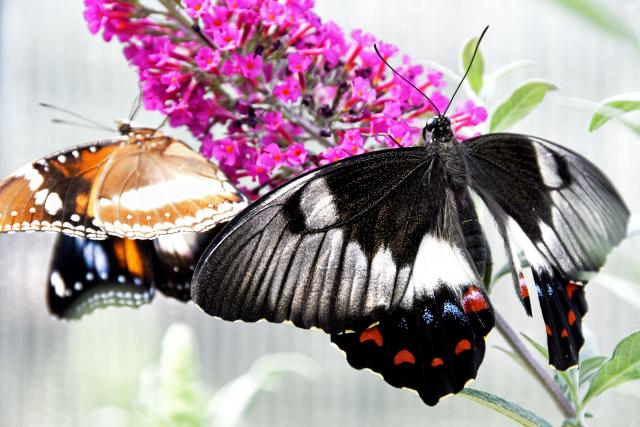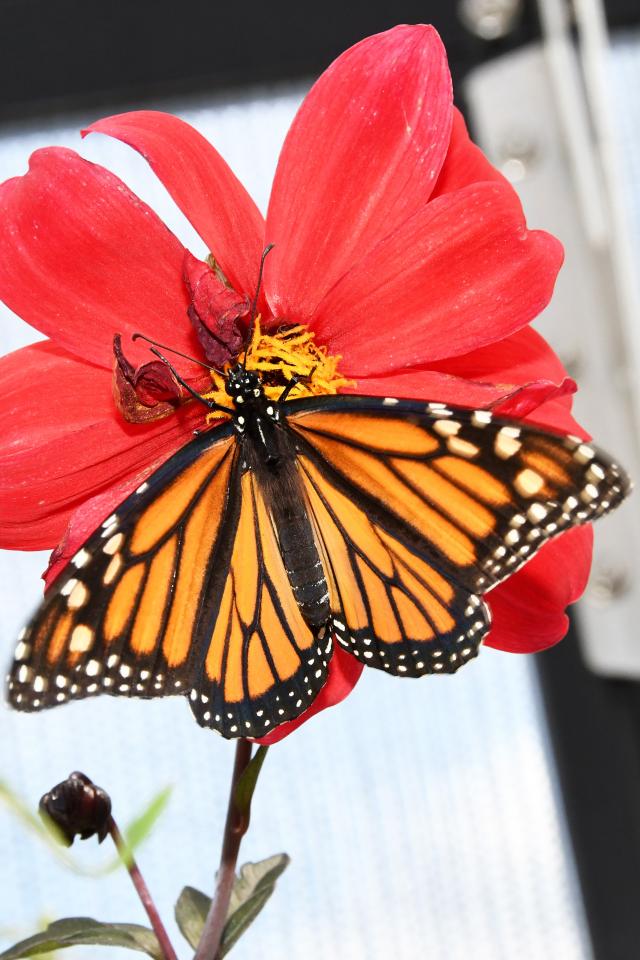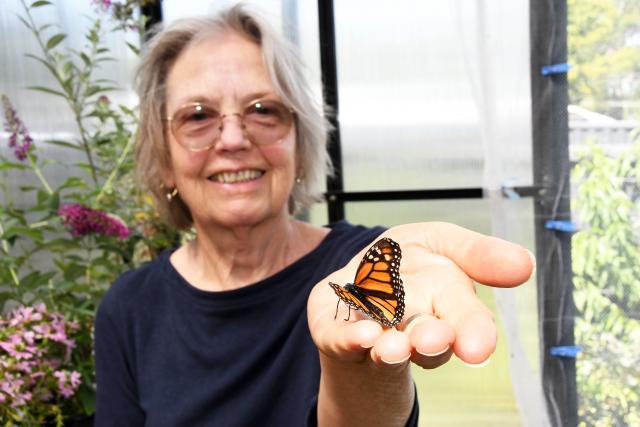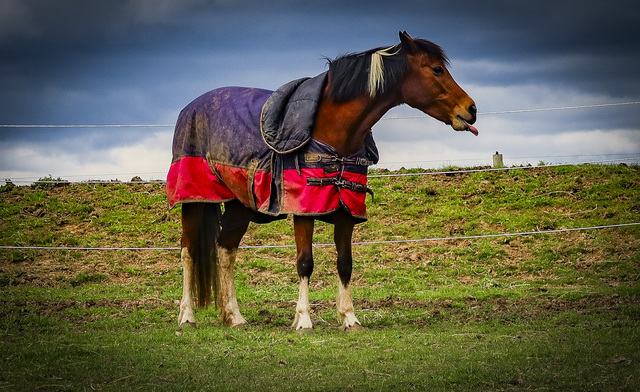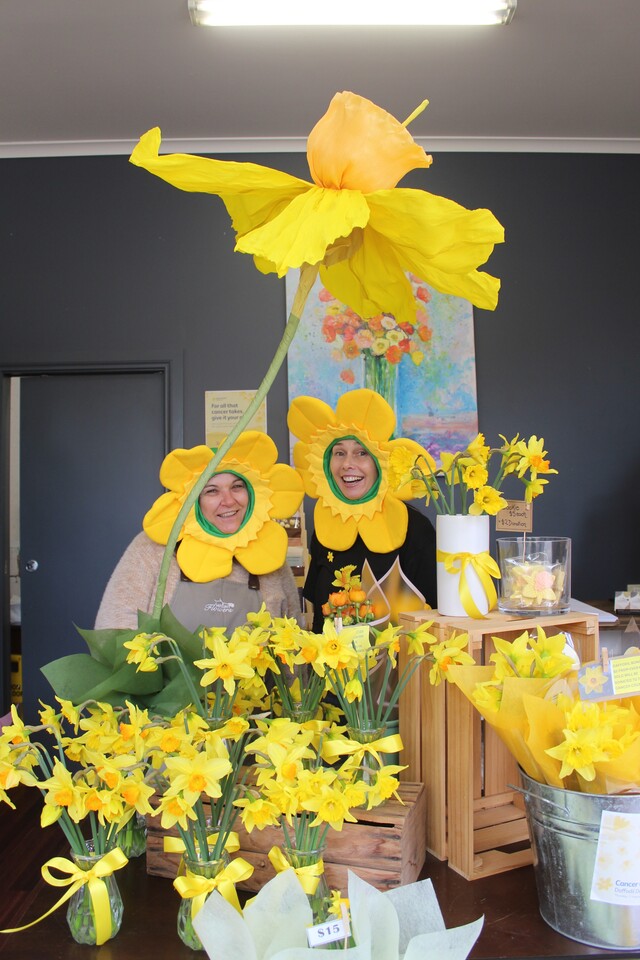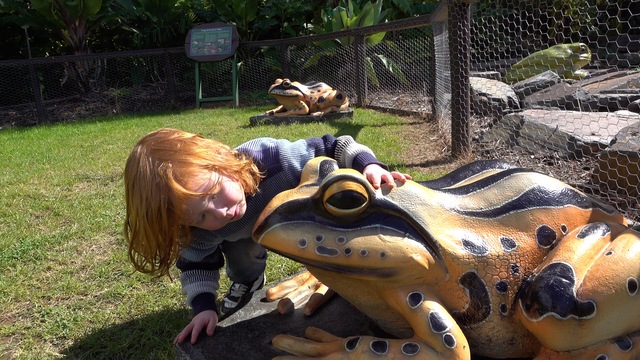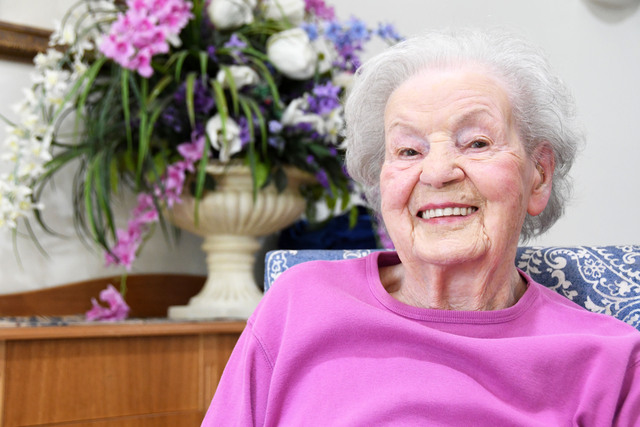When now-Monbulk local Yvonne Duke moved to Australia from New Zealand in the 2000s, she realised education about the prolific Monarch butterfly wasn’t as extensive as it was in schools in her home country.
“Everybody’s got monarchs floating around their gardens in New Zealand because everybody grows the food plant for them in their gardens. Well most people do, so they’re very common,“ Yvonne said.
“They put them in the classrooms to teach the children about metamorphosis because they’re so colourful at every stage, they’re very appealing to children.
“But when we came to live in Australia, I found that they didn’t do that… and in fact, my Australian friends hadn’t been taught anything about it, so I thought: Well, that’s a pity’.“
In an attempt to get students learning about the butterfly life cycle, Yvonne managed to get a hold of some eggs from the Melbourne Zoo and began growing a host plant to producing monarch butterflies with the sole purpose of getting them into class rooms.
Her 1800 square metres became home to a shade house and a hot house; breeding multiple varieties including Blue Moon, Orchard Swallowtail and Monarch butterflies with the help of plants including buddleja.
“For native butterflies I grow native grasses; they like weeping native grasses and poa grasses, [or] kangaroo grass,“ Yvonne said.
“I’ve got a plant in my garden that’s a host plant for the Painted Lady, and it’s planted right next to a new buddleja bush, and they lay their eggs there.“
When the caterpillars get more mature, Yvonne will cut some of the foliage off the host plant and bring the caterpillar inside to feed it protected from predators.
“In the garden, of course, if you’ve got a good ecosystem, you’ve got predatory insects and birds and frogs and geckos and all of those things which will find butterflies and caterpillars quite tasty, so I bring the caterpillars inside and raise them by hand.
“Then they get into the pupa stage… and I look after that indoors until it emerges as a butterfly, and when the butterfly emerges, I release it into the garden.“
Yvonne has visited local schools and kindergartens throughout her 15 years breeding butterflies, including Belgrave Preschool and Sherbrooke Community School, with children gathering together to see the butterfly emerge out of its chrysalis.
“It’s usually a couple of weeks as a caterpillar and a couple of weeks as a chrysalis, and then it’s out, so you’ll fit it into a school term,“ Yvonne said.
“The caterpillars are very hungry, as we all know, so they sometimes need quite a lot of guidance about what to do, how to handle them when they’re ready to pupate and change from a caterpillar into a chrysalis.
“Children get the idea that these are not to be kept as a pet; they’re wild creatures that you’ve got to let go, so it’s very good for them for that as well.“
Yvonne is now breeding the green Macleay’s Swallowtail to be donated to the Melbourne Zoo, preparing to make the delivery while the butterflies are in their pupa stage.
“Another butterfly breeder told them about me and where I lived, and they got in touch and asked me if I would breed,“ Yvonne said.
“It’s a beautiful green butterfly with a brown border to its wings. It has a little tail on its wings and it flutters constantly when it’s feeding.
“They lay their eggs on Sassafras trees which grow in the damp gullies around the Dandenong ranges and creek beds, so they lay their eggs usually on the new foliage which is often right at the top of the tree.“
With the help of a friend in Ferny Creek who has buddleja bushes on her property, Yvonne has collected around 20 eggs.
Yvonne is asking those with Sassafras growing on their property and willing to share some foliage for the Macleay’s Swallowtail to contact her via email at y.duke@bigpond.com.
Schools and aged care home staff wanting to contact Yvonne about a butterfly showcase can also contact her via email.
“I feel very privileged to be able to help out,“ she said.
“It would be great if more people were doing it because the insect world is in strife right across the board, and there are some butterflies getting more scarce, climate change is disrupting migration patterns because quite a few native butterflies migrate.
“It’s good to be able to do something positive and happy.“

